Aviation Mechanical Component Technicians are involved in the overhaul, repair, modification, inspection, testing and certification of aviation components of the mechanical, hydraulic, fuel, electrical and pneumatic aircraft systems.
These technicians are thoroughly familiar with safe work practices and the rules and regulations affecting their work and work place. They are involved in the set-up and operation of tools and equipment and some semi-automatic processes. They must possess a high level of manual dexterity and a strong interest in mechanics. They must also be able to work with others co-operatively and follow directives precisely.
Certification Requirements
To qualify for certification with CCAA, the applicant must possess the necessary knowledge and skills and have acquired a minimum of thirty-six (36) months in the occupation. Experience requirements expressed in months are based on full-time employment of a maximum of 1800 working hours per year. In addition, applicants are required to perform a minimum of 70% of the total number of tasks in the logbook, based on their area of specialty.
There are five (5) distinct systems within the logbook, they are as follows:
- Mechanical
- Hydraulics
- Fuel
- Electrical
- Pneumatic
It is expected that the tasks accomplished by the applicant will, in general, relate to a single system type.
CCAA will apply credit for completion of a CCAA accredited Aviation Mechanical Component Shop Technician course as part of the thirty-six (36) month experience requirement on a month to month basis, up to a maximum of twelve (12) months.
The tasks in the logbook were made as generic as possible to accommodate the largest amount of work environments and equipment / tools but do not necessarily cover all tasks performed by individuals.
Tasks Common to Most Aviation Mechanical Component Shop Technician
(note that sub-tasks for each task are not shown below)
Block A — Safety
Task 1 – Demonstrates Safe Working Practices and Techniques
Block B — Scoping Work
Task 2 – Identifies Components of Mechanical, Hydraulic, Fuel, Electrical and Pneumatic Systems
Task 3 – Checks Certification Authority to Perform Work
Task 4 – Determines Modification Status of Components by Accessing Accurate Information
Task 5 – Determines Level of Maintenance Required
Block C — Overhauling Components of Mechanical, Hydraulic, Fuel, Electrical and Pneumatic Aircraft Systems
Task 6 – Disassembles Components
Task 7 – Cleans and Strips Component Parts
Task 8 – Inspects Component Parts
Task 9 – Orders Required Component Parts
Task 10 – Repairs, Reworks and Modifies Component Parts
Task 11 – Assembles Components
Task 12 – Tests and Troubleshoots Components
Task 13 – Performs Final Assembly, Inspection and Certification
Block D — Repairing Components of Mechanical, Hydraulic, Fuel, Electrical and Pneumatic Aircraft Systems
Task 14 – Conducts Pre-Test
Task 15 – Disassembles Components, as required
Task 16 – Cleans and Strips Component Parts, as required
Task 17 – Inspects Component Parts, as required
Task 18 – Orders Required Component Parts
Task 19 – Repairs, Reworks and Modifies Component Parts, as required
Task 20 – Assembles components, as required
Task 21 – Tests and Troubleshoots Components, as required
Task 22 – Performs Final Assembly, Inspection and Certification
Block E — Inspecting Parts and Components of Mechanical, Hydraulic, Fuel, Electrical and Pneumatic Aircraft Systems
Task 23 – Reviews Documentation
Task 24 – Identifies Components and Parts
Task 25 – Performs Inspection of Components or Parts
Task 26 – Certifies or Rejects Components or Parts
Block F — Testing Components of Mechanical, Hydraulic, Fuel, Electrical and Pneumatic Aircraft Systems
Task 27 – Tests and Certifies Component
Block G — Protecting and Handling Components of Mechanical, Hydraulic, Fuel, Electrical and Pneumatic Aircraft Systems
Task 28 – Packages and Preserves Components for Storing and Shipping
